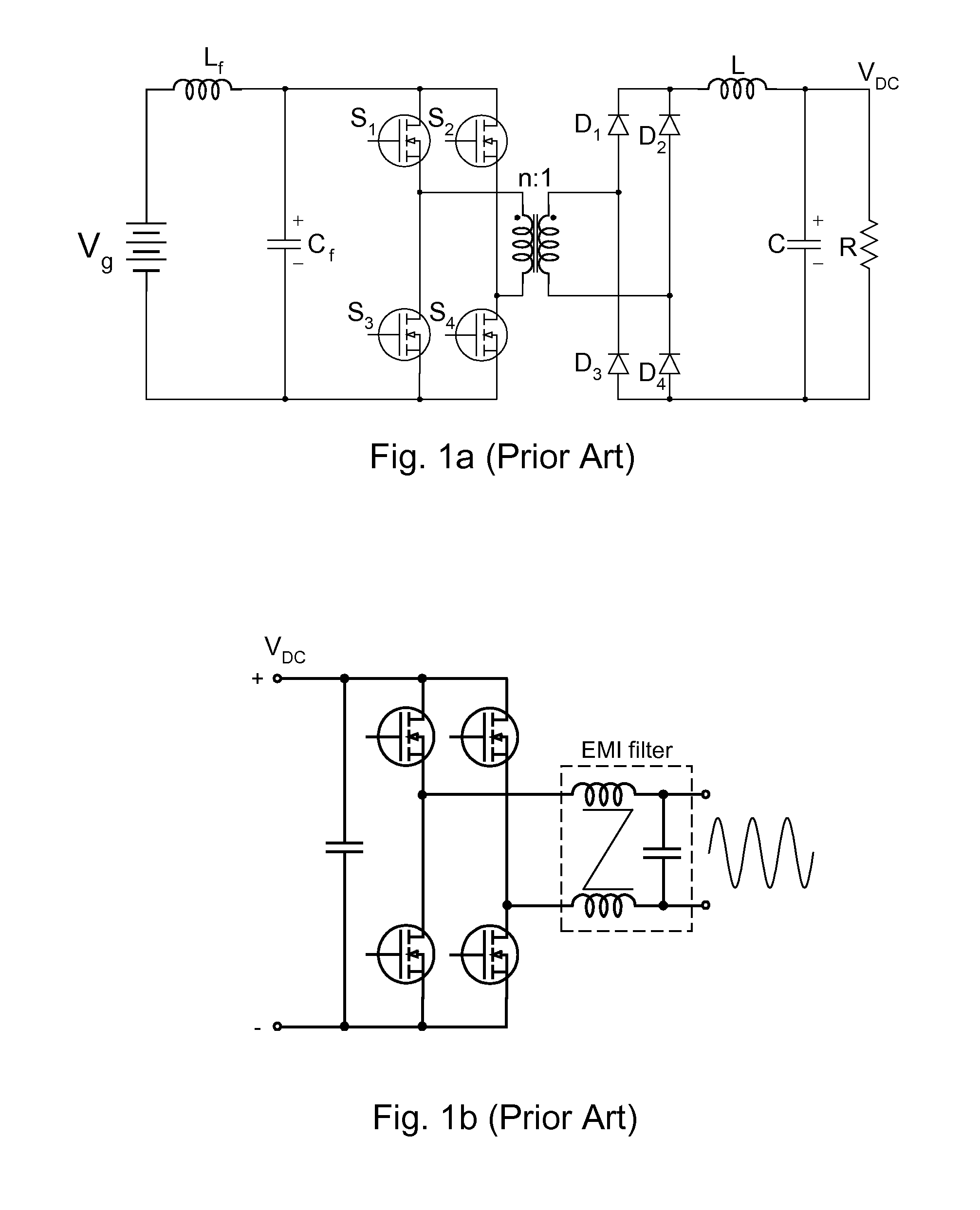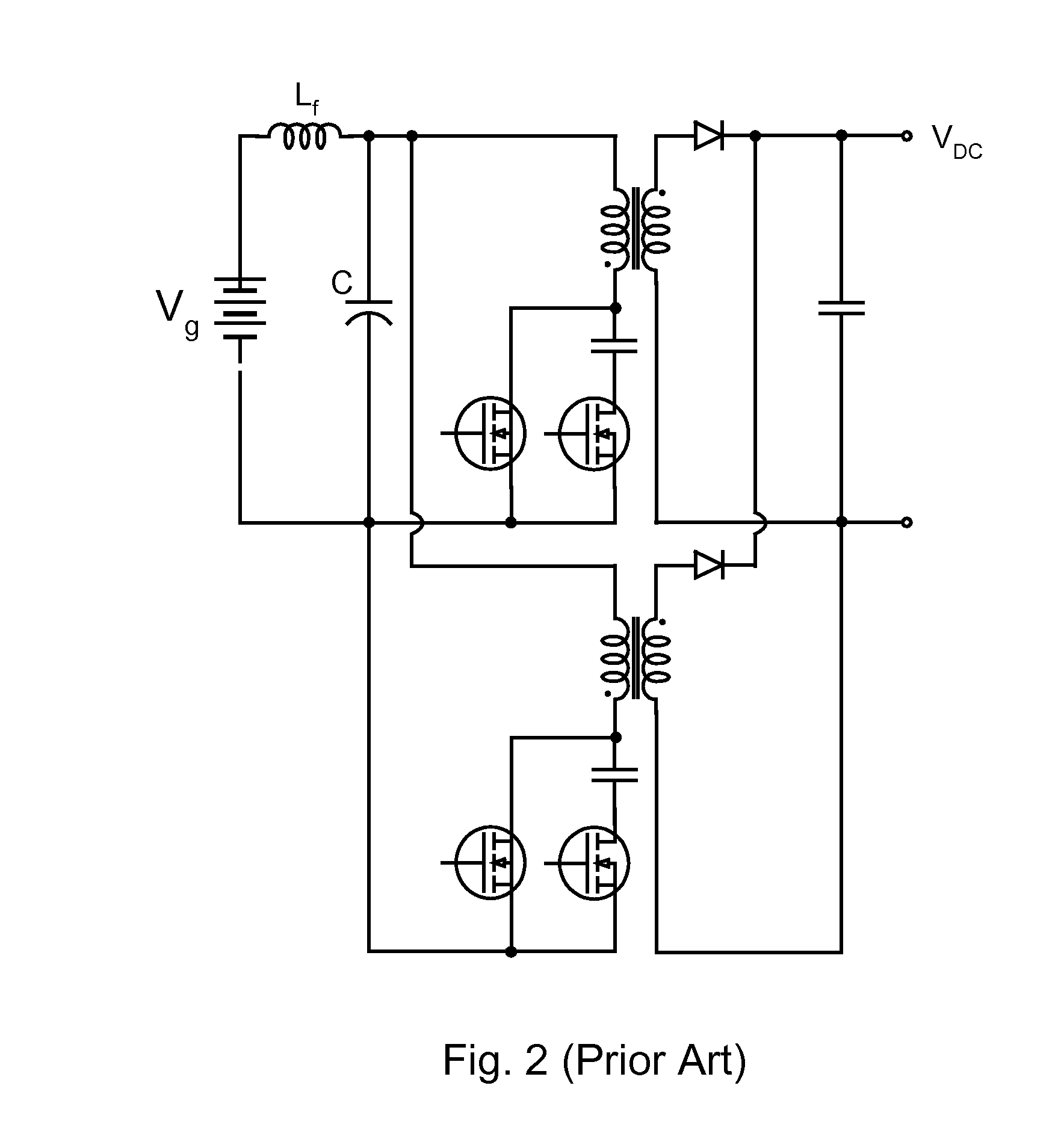Single-stage inverter with high frequency isolation transformer
- Summary
- Abstract
- Description
- Claims
- Application Information
AI Technical Summary
Benefits of technology
Problems solved by technology
Method used
Image
Examples
Example
[0095]In some applications no isolation is required, nor the voltage scaling by the transformer turns ratio. In that case Single-Stage inverter can be further simplified by shorting the transformer and combining two capacitors in series to result in a single capacitor and a Single-Stage non-isolated DC-AC inverter shown in FIG. 6a, which also eliminates the need for the unfolding four transistors full bridge stage.
[0096]FIG. 6b shows another implementation of the composite switch comprising S2 and S3 switches but this time using the two switches connected in parallel and each switch implemented by a Reverse Blocking IGBT (RBIGBT) transistors. Note that that this composite switch operates so that S3 switch operates in first quadrant for positive polarity output voltage and is OFF for negative output voltage polarity. The switch S4 on the other hand operates in third quadrant for negative output voltage polarity and is OFF for positive output voltage polarity.
Basic Operation and Analy...
PUM
 Login to View More
Login to View More Abstract
Description
Claims
Application Information
 Login to View More
Login to View More - R&D
- Intellectual Property
- Life Sciences
- Materials
- Tech Scout
- Unparalleled Data Quality
- Higher Quality Content
- 60% Fewer Hallucinations
Browse by: Latest US Patents, China's latest patents, Technical Efficacy Thesaurus, Application Domain, Technology Topic, Popular Technical Reports.
© 2025 PatSnap. All rights reserved.Legal|Privacy policy|Modern Slavery Act Transparency Statement|Sitemap|About US| Contact US: help@patsnap.com



